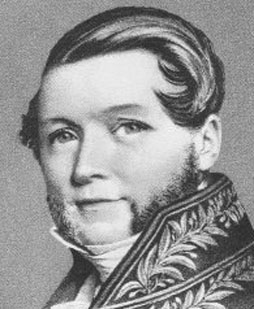| Pierre-Jean David d'Angers  AKA Pierre-Jean David AKA Pierre-Jean David
Born: 12-Mar-1789
Birthplace: Angers, France
Died: 4-Jan-1856
Location of death: Paris, France
Cause of death: unspecified
Remains: Buried, Cimetière du Père Lachaise, Paris, France
Gender: Male
Race or Ethnicity: White
Occupation: Sculptor Nationality: France
Executive summary: Sculpted pediment of the Panthéon Pierre-Jean David, usually called David d'Angers, French sculptor, was born at Angers on the 12th of March 1789. His father was a sculptor, or rather a carver, but he had thrown aside the mallet and taken the musket, fighting against the Chouans of La Vendée. He returned to his trade at the end of the civil war, to find his customers gone, so that young David was born into poverty. As the boy grew up his father wished to force him into some more lucrative and certain way of life. At last he succeeded in surmounting the opposition to his becoming a sculptor, and in his eighteenth year left for Paris to study the art upon a capital of eleven francs. After struggling against want for a year and a half, he succeeded in taking the prize at the École des Beaux-Arts. An annuity of 600 francs was granted by the municipality of his native town in 1809, and in 1811 David's "Epaminondas" gained the Prix de Rome. He spent five years in Rome, during which his enthusiasm for the works of Canova was often excessive.
Returning from Rome about the time of the restoration of the Bourbons, he would not remain in the neighborhood of the Tuileries, which swarmed with foreign conquerors and returned royalists, and accordingly went to London. Here Flaxman and others visited upon him the sins of David the painter, to whom he was erroneously supposed to be related. With great difficulty he made his way to Paris again, where a comparatively prosperous career opened upon him. His medallions and busts were in much request, and orders for monumental works also came to him. One of the best of these was that of Gutenberg at Strasbourg; but those he himself valued most were the statue of Barra, a drummer boy who continued to beat his drum until the moment of death in the war in La Vendée, and the monument to the Greek liberator Bozzaris, consisting in a young female figure called "Reviving Greece", of which Victor Hugo said: "It is difficult to see anything more beautiful in the world; this statue joins the grandeur of Phidias to the expressive manner of Puget." David's busts and medallions were very numerous, and among his sitters may be found not only the illustrious men and women of France, but many others both of England and Germany -- countries which he visited professionally in 1827 and 1829. His medallions, it is affirmed, number 500. He died on the 4th of January 1856. David's fame rests firmly on his pediment of the Panthéon, his monument to General Gobert in Père Lachaise and his marble "Philopoemen" in the Louvre. In the Musée David at Angers is an almost complete collection of his works either in the form of copies or in the original moulds. As an example of his benevolence of character may be mentioned his rushing off to the sickbed of Rouget de Lisle, the author of the "Marseillaise Hymn", modelling and carving him in marble without delay, making a lottery of the work, and sending to the poet in the extremity of need the £72 which resulted from the sale.
Prix de Rome 1811
Do you know something we don't?
Submit a correction or make a comment about this profile
Copyright ©2019 Soylent Communications
|